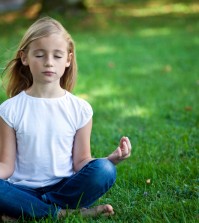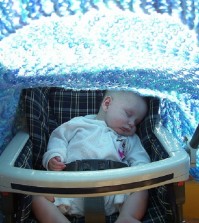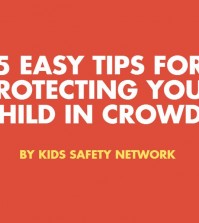- Study Says Most Parents Don’t Use Car Seats In Ride Share Vehicles Like Uber
- This 12-Year-Old Boy Is A Sophomore Aerospace Engineering Major!
- Fire Safety Experts Warn Of Hand Sanitizer Danger After A Mom and Kids Escape House Fire
- Recall Alert: Peaches May Be The Cause Of Salmonella Outbreak, 68 People Ill
- Summer Vacation In The Days Of COVID: Tips To Stay Safe
- How To Safely Grocery Shop During The Coronavirus Pandemic
- Michigan Teen With Vape-Related Illness Undergoes Double Lung Transplant
- Teen Kicks Off Anti-Vaping Campaign From Hospital Bed
- Teenager Receives Life Sentence For Strangling Sister To Death Over A Wi-Fi Password
- Toddler Falls To Death From 11th Deck of Cruise Ship
6 Ways To Teach Your Kids How To Preserve Their Personal Space


This visual manual is designed for five- to ten-year-olds. It is called “Circles of Relationships” and can help prevent sexual harassment, physical abuse, and psychological abuse simply by giving a child enough information to understand that something wrong is going on.
Myself, my private space
At the heart of the diagram lies the most important violet circle. This circle represents you. Your body is no one’s property but your own. Only you can decide who should be allowed to get close, to touch you. No person should do that without your permission. And it doesn’t matter which of the relationship circles that person belongs to — especially when it comes to protecting one’s personal space during childhood. Be it the case of your grandpa forcing you to sit in his lap, or your mom’s best friend demanding that you give her a kiss on the cheek, you mustn’t hesitate in telling others about it. And you mustn’t hesitate to say, “No! Stop doing this!”
Family
This one represents our family and loved ones. Respect, trust, and affection — those are the factors that determine whom we admit into this closest of circles. However, even our nearest and dearest should be mindful of our personal space boundaries. Similarly, we, ourselves, should respect our loved ones’ privacy.
Friends
This circle consists of people who belong to the “far away hugs” category. This includes our friends and those with whom we like to communicate. Friendship is very important and involves many things: cooperative games, conversations, revelry and, sometimes, friendly hugs. Friendship is always based on trust and respect. It’s only natural that all of its manifestations, including hugs, must be based on mutual consent. This is important in relationships between kids as well as adults. A child must be aware of the fact that not all classmates have the right to behave as his or her friends. Also, parents should talk to their children to make them understand what criteria define friendship and how one must behave toward one’s friends.
Acquaintances
The yellow circle encapsulates those to whom we might wave to in passing: superficial acquaintances that don’t play an important role in our life. When you’re a kid, these could include children on the school bus, kids from your neighborhood, your sports teammates, or friends of your parents. Moms and dads need to introduce their little ones to social norms, different types of acquaintances, and related safety rules. Every kid should know the difference between close friends and the people with whom one simply exchanges a few phrases now and then. Children also need to be aware of the distance that must be observed by both sides in such relationships.
Professional Helpers
Teachers, kindergarten workers, police officers, firefighters, nurses, and doctors — these people can help us when we need it, but they are not our friends. Parents ought to make sure their kids are familiar with different kinds of emergency situations and know whom one needs to contact in each particular scenario. Also, it is important to stress that all these people always wear special uniforms/badges and carry relevant ID papers.
Strangers
Here are the things your kids need to know about strangers:
We don’t know these people (even if they say they know us, it doesn’t matter). Not all strangers are a threat, but, because they are strangers, we can’t tell whether they are good or bad. We don’t trust strangers. We don’t talk to them, and we don’t tell them anything about ourselves or our loved ones. We mustn’t answer strangers’ questions. We must never, ever go anywhere with strangers or get in their cars. We don’t take sweets from strangers. We mustn’t help strangers search for their runaway dogs or help them find the street they’re looking for — adults should never seek assistance from those younger and weaker than themselves.
This, in short, is what the lessons are about. The kids color the different circles on the diagram, while teachers talk them through various situations, encouraging them to suggest what course of action needs to be taken in each case. All the while, the teachers repeat over and over, a hundred times, that “If someone’s behavior causes you discomfort, you must say “NO! STOP THAT!” If you feel that someone is treating you in unacceptable ways, tell your parents or your teachers at once. No one can touch you without your consent. But neither do you have the right to invade someone else’s personal space without permission. If the adults fail to see the importance of your complaints right away, repeat them again and again until they understand you. You mustn’t try to solve the problem on your own. You mustn’t hide your problem, and you mustn’t feel ashamed of it. Don’t be afraid to speak out. Don’t be afraid to ask questions.”







0 comments